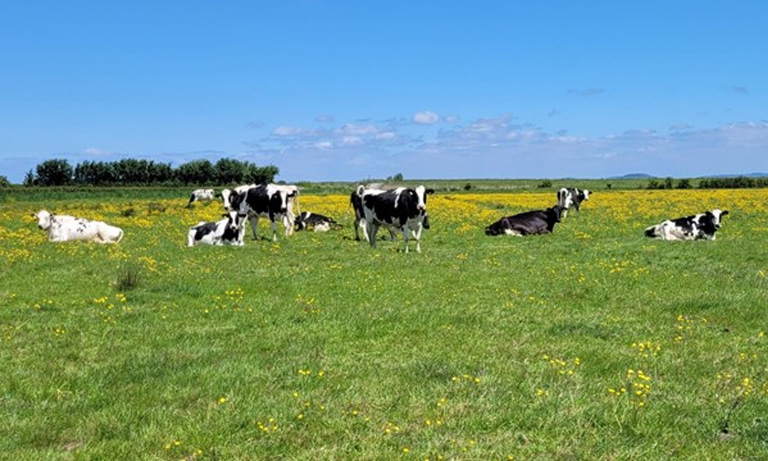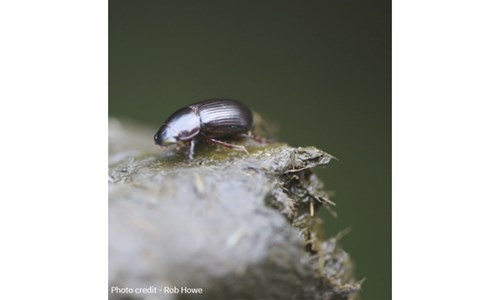Brucella canis: what vets need to know
14 Feb 2024
27 Sep 2022 | Sally Willson
Farm vets play an important role in keeping animals healthy and safeguarding public health, but they can also support environmental goals. In this article, BCVA board member Sally Willson tells us how farm vets can use their influential role to support sustainability, and especially responsible parasiticide use.

Everyone knows the role of farm animal vets is to keep production animals healthy, optimising welfare and therefore safeguarding public health. But there’s so much more below the surface which we farm vets contribute, including supporting environmental goals, improving productivity, reducing carbon footprints and supporting biodiversity on farms. A key focus area is the use of medicines, and especially parasiticides. Here are some examples of where sustainability, farm vets and parasiticide use overlap.
Whilst the average human carbon footprint in the UK has been estimated at 13.4T CO2e/year, it has been calculated that the average dairy cattle vet would have the equivalent of 24,000T CO2e/year under their care, 30,000T CO2e/year for a full-time beef vet, and 7,000T CO2e/year for a sheep vet.
Proactive farm health and food systems which improve animal health, welfare, and productivity, contribute to the reduction of the farm’s carbon footprint and help us move toward environmental targets. Vets have a particularly significant role in preventing disease and offering considered, evidence-based treatment strategies when animals are unwell. Treatments which maintain the health and growth rate of the animal also improve efficiency of production, which reduces the carbon cost of the lamb, beef or dairy being produced.
The first few weeks of life is a critical window of opportunity to shape the trajectory of a heifer’s lifetime productivity in a dairy herd. Helping farmers to give a heifer calf a good start is ultimately contributing towards improved environmental gain. Healthy heifers should calve at around 23 months, and should be at 85% of their adult bodyweight by this time. This boils down to feed conversion efficiency which is at its best during the first few weeks of life.

As the heifers are weaned and turned out in the Spring, their next potential challenge is parasitic disease. This is of huge importance in ruminant species, and gastrointestinal nematodes, liver fluke and lungworm combined are estimated to cost European countries £1.8billion annually, through production and treatment costs. Vets play an essential role in helping to prevent and mitigate the impacts of parasites on livestock. but we also need to be working to prevent and mitigate the negative impact of medicines ending up in the natural environment.
Lamb production can also be greatly hindered by parasitic burdens and the associated anthelmintic resistance. We need to maintain the ability to treat these diseases without worsening the resistance problem, whilst adopting multiple strategies such as pasture rotation, maximising immune capability through general health, genetics and nutrition.
This is where vets and Integrated Parasite Management (IPM) comes in. Anthelmintic Resistance (AR) is a long-standing problem which isn’t going away. Dung beetles are also in decline, representing a further threat to farm productivity. This decline can be connected partly to the over-use of anthelmintics, which are harmful to aquatic life and many insect species. The active ingredients are lethal even at very low doses, they remain in the environment for a long time and can even reduce plant growth by 18%. The level of harm a product can do environmentally is directly related to the amount that enters the environment. This is dependent on several factors;
Many of these factors can be controlled on farm, and vets are ideally placed to help facilitate this.
In the veterinary profession and UK farming we have witnessed a concerted effort toward improved antimicrobial stewardship. Indeed, national antibiotic stewardship campaigns have been well-received by both farm vets and the farming communities they serve. These very approaches can now also act as a framework for an integrated approach to endoparasite control. Effective soil management alongside associated health plans provide the greatest potential for achieving sustainable use of agricultural land. So, going forward it will also be in our profession’s interest to increase our knowledge about soil health.
There is, of course, a crucial role for parasiticides in parasite control. It is essential that farm vets have both the resources and relevant understanding to raise awareness of anthelmintics resistance in cattle; have the ability to create strategies with their farm clients to reduce unnecessary use of these products; and be able to demonstrate that the use of these products should be targeted and structured, based primarily on scientific evidence.
Vet Sustain produced An Introduction to Sustainability in Farm Vet Practice and BCVA have policies on sustainability and parasiticides.
Get tailored news in your inbox and online, plus access to our journals, resources and support services, join the BVA.
Join Us Today